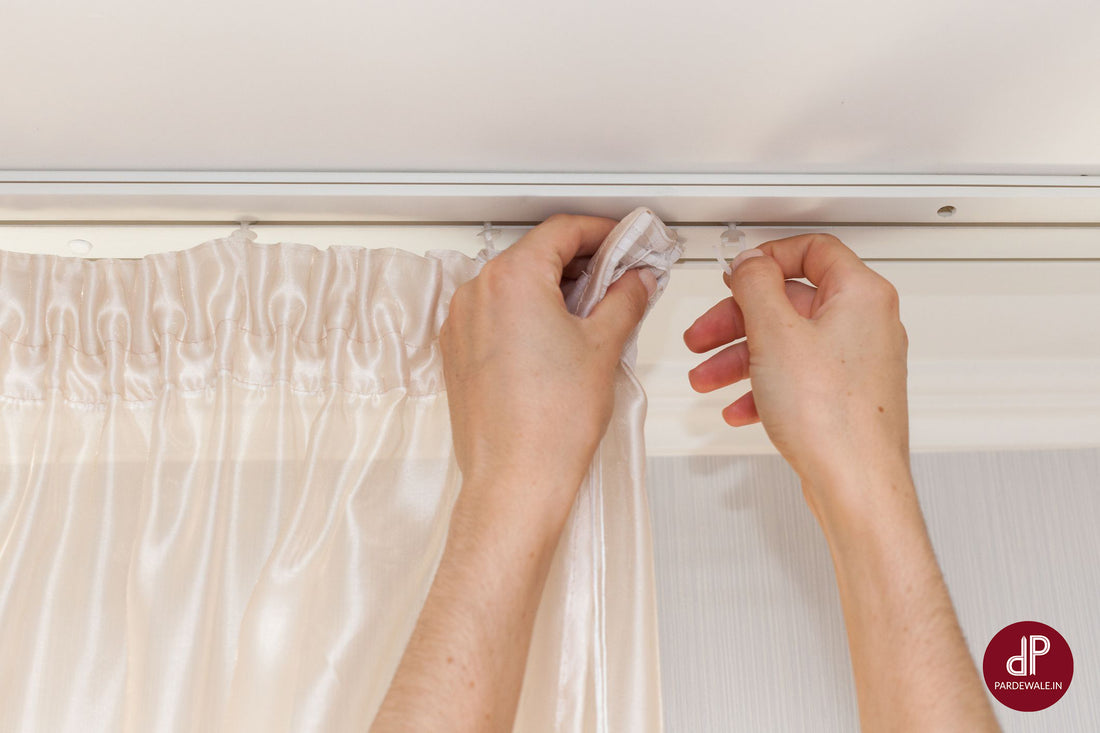Curtains play a significant role in enhancing the aesthetics of a room, but they can also accumulate dust, dirt, and odors over time. Regular cleaning and maintenance are essential to keep your curtains looking fresh, extend their lifespan, and maintain a healthy indoor environment. In this blog, we will guide you through the process of cleaning and maintaining your curtains to ensure they stay beautiful and functional for years to come.
Read the Care Instructions:
Before you begin cleaning your curtains, it's important to read the care instructions provided by the manufacturer. Different curtain fabrics may require specific cleaning methods and precautions. Always follow the recommended guidelines to avoid damaging the fabric or causing shrinkage.
Regular Dusting and Vacuuming:
Dust and lint can accumulate on curtains, especially in high-traffic areas. To remove dust, start by using a soft-bristle brush or a lint roller to gently brush or roll over the surface of the curtains. Alternatively, you can use the upholstery attachment of your vacuum cleaner to gently vacuum the curtains, being careful not to pull or stretch the fabric.
Spot Cleaning:
For small stains or spills, it's best to spot clean the affected area immediately to prevent the stain from setting. Blot the stain with a clean, damp cloth or sponge, using mild detergent or a stain remover specifically designed for the fabric. Avoid rubbing the stain vigorously, as it may damage the fabric. After spot cleaning, gently blot the area with a clean, dry cloth to remove excess moisture.
Machine Washing:
Most curtains can be machine washed, but always check the care instructions first. If machine washing is recommended, remove any hooks, rings, or hardware from the curtains. Place the curtains in a mesh laundry bag or pillowcase to protect them during the wash cycle. Use a mild detergent and select the delicate or gentle cycle with cold water. Avoid using bleach unless specified by the manufacturer. After washing, hang the curtains to air dry or tumble dry on a low heat setting if allowed.
Dry Cleaning:
Certain delicate or specialty fabrics may require professional dry cleaning. If the care instructions state "dry clean only," take your curtains to a reputable dry cleaner experienced in handling curtains. Inform the dry cleaner about any stains or specific concerns you have. It's essential to properly communicate the fabric type and any attached trims or embellishments to ensure the curtains are cleaned correctly.
Ironing and Steaming:
To remove wrinkles and creases from your curtains online, follow the fabric's care instructions regarding ironing and steaming. Some fabrics may require low heat or steam settings, while others may need to be ironed on the reverse side or with a pressing cloth to protect the fabric. Always test a small, inconspicuous area before ironing the entire curtain.
Sun Protection:
Prolonged exposure to direct sunlight can cause fading and deterioration of curtain fabrics. To protect your curtains from sun damage, consider using sheer or lightweight curtains as a first layer to filter the sunlight. Additionally, installing window film or using UV-blocking blinds or shades can further minimize the harmful effects of sunlight on your curtains.
Regular Maintenance:
Besides cleaning, regular maintenance practices can help extend the life of your curtains. Gently open and close the curtains using the designated cords or rods to avoid excessive pulling or tugging. Avoid placing heavy objects on the curtains, as this can strain the fabric and hardware. Regularly check the curtain hardware, such as rods and rings, for any signs of wear or damage and replace them if necessary.
Conclusion:
Proper cleaning and maintenance are vital for preserving the beauty and functionality of your curtains. Regular dusting, spot cleaning, and following the care instructions provided by the manufacturer will help keep your curtains

